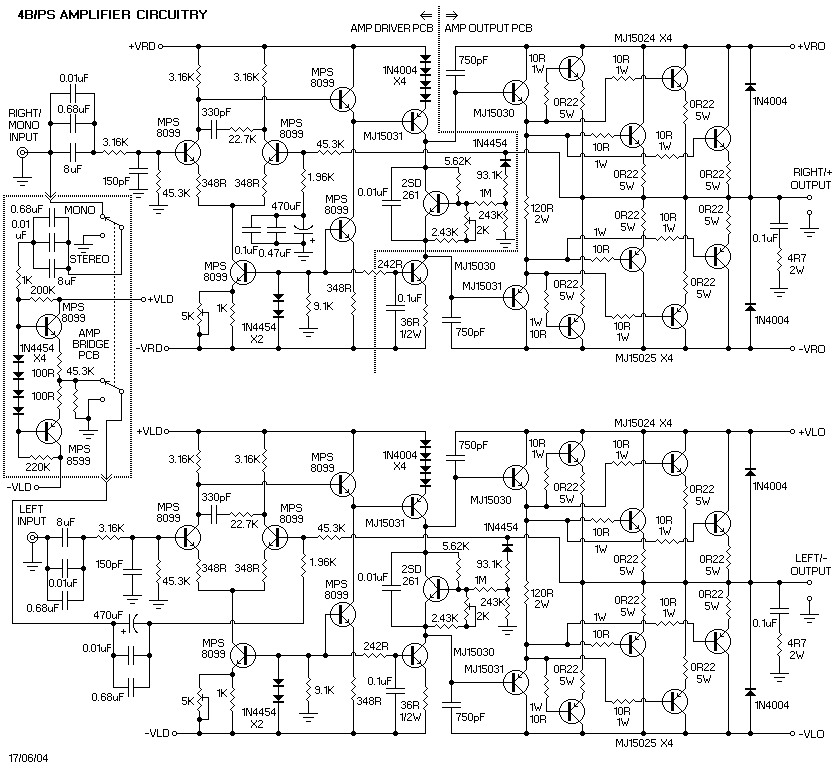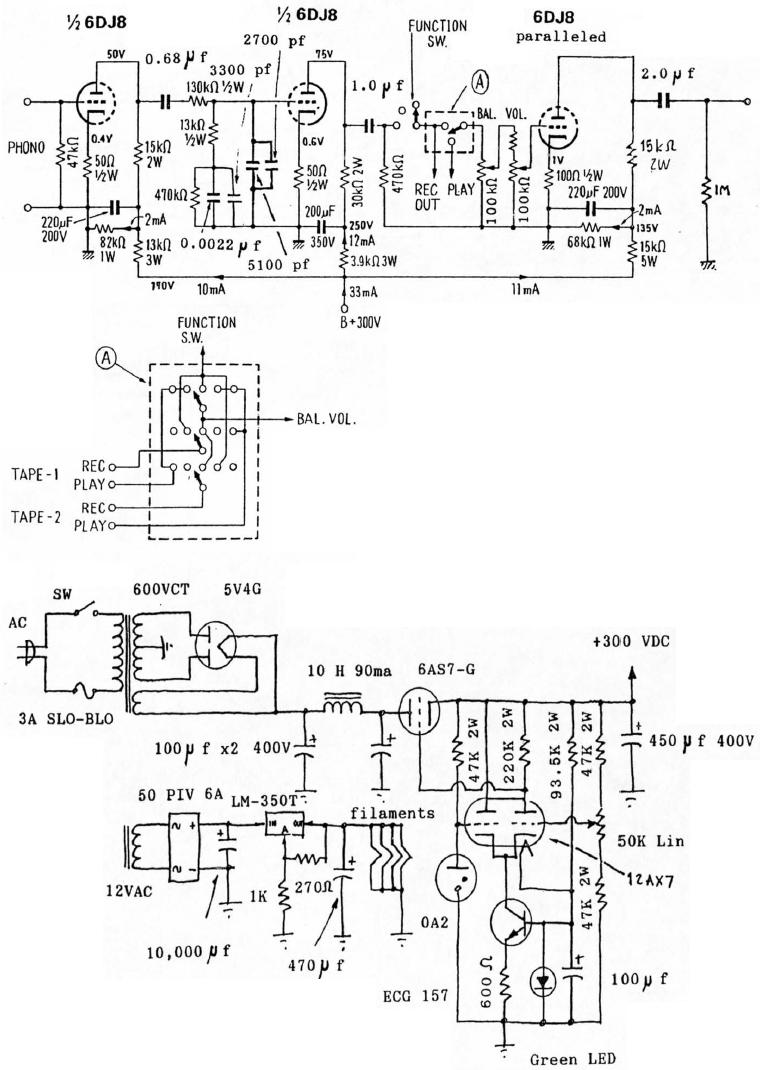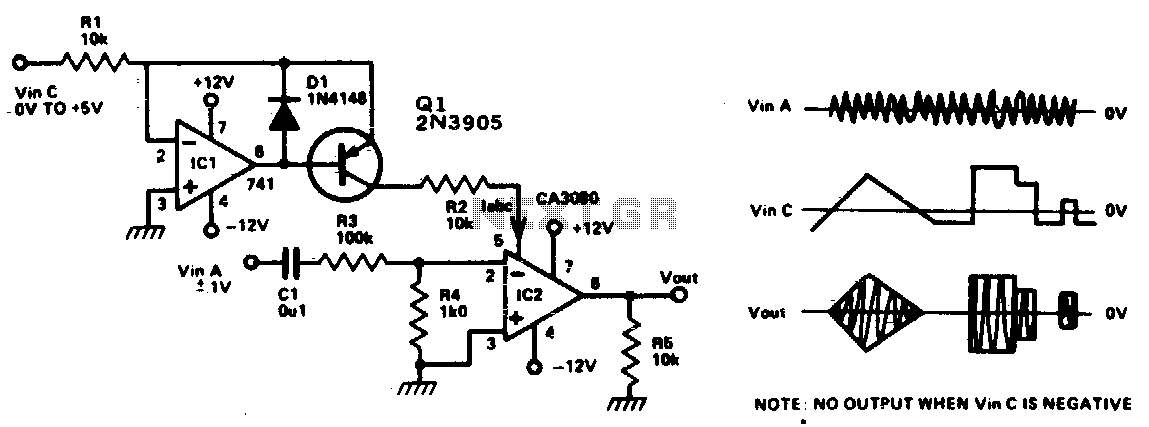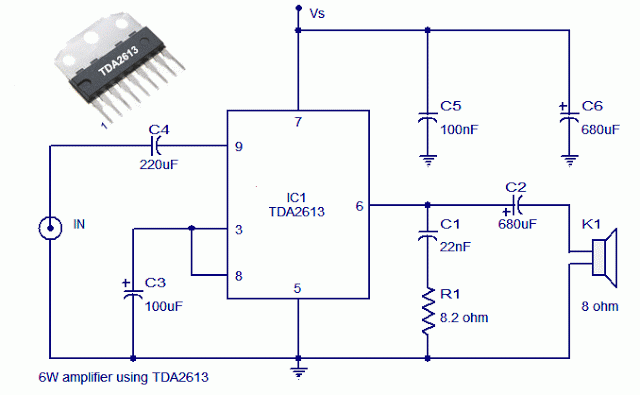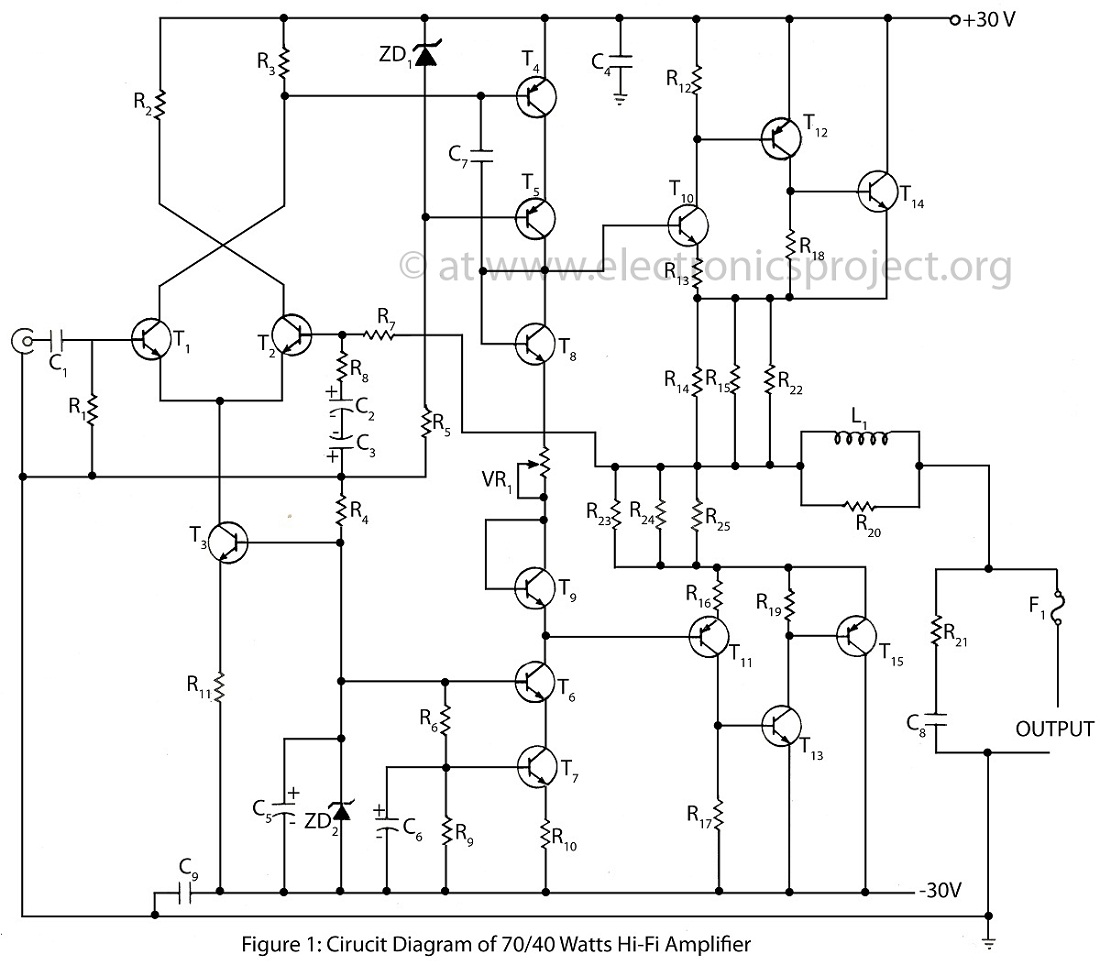
Microphone Amplifier / Modulator for 7 MHz SSB Transceiver
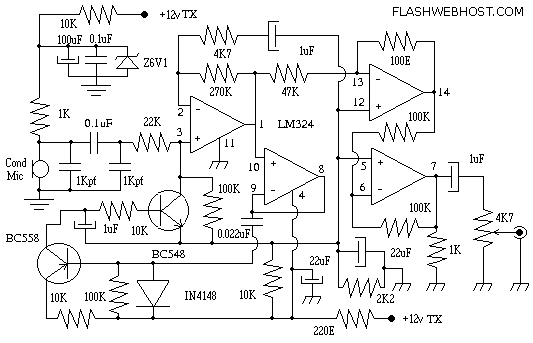
The microphone amplifier comprises an LM324 integrated circuit and two transistors. The LM324 is available in a 14-pin dual in-line package (DIP) and was acquired at a cost of Rs 6. It contains four identical operational amplifiers. The transistors BC548 and BC558 are utilized as a compressor. A 2-wire shielded cable is employed for connecting the microphone, with one wire designated for the condenser microphone and the other for the Push-to-Talk (PTT) switch. The shield acts as a common ground for both connections.
The microphone amplifier circuit utilizes the LM324, which is a quad operational amplifier, allowing for versatile signal processing. Each of the four op-amps can be configured for various functions, such as amplification, filtering, or buffering. In this application, one of the op-amps is used to amplify the low-level audio signal from the microphone.
The BC548 and BC558 transistors function as a compressor, which is essential for controlling the dynamic range of the audio signal. The BC548 is an NPN transistor, while the BC558 is a PNP transistor. This complementary pair allows for effective signal processing, ensuring that the output level remains consistent even when the input signal varies significantly.
The use of a 2-wire shielded cable for the microphone connection is critical for reducing electromagnetic interference (EMI) and ensuring a clean audio signal. The shield serves as a ground reference, helping to eliminate noise that could be induced from external sources. One wire connects to the condenser microphone, which requires a bias voltage for operation, while the other wire connects to the PTT switch, allowing the user to activate the microphone only when needed.
This microphone amplifier circuit can be employed in various applications, such as public address systems, recording equipment, or communication devices, where high-quality audio capture is essential. Proper layout and grounding techniques should be observed to maximize performance and minimize noise.Microphone amplifier consists of LM324 and two transistors. LM324 is available in 14 pin DIP. I brought it for Rs: 6/-. It contains four identical operational amplifiers. Transistors BC548 and BC558 are used as compressor. I used 2-wire shield wire for connecting microphone. One wire is used for condenser microphone and the other for PTT switch. Shield serves common ground to both. 🔗 External reference
The microphone amplifier circuit utilizes the LM324, which is a quad operational amplifier, allowing for versatile signal processing. Each of the four op-amps can be configured for various functions, such as amplification, filtering, or buffering. In this application, one of the op-amps is used to amplify the low-level audio signal from the microphone.
The BC548 and BC558 transistors function as a compressor, which is essential for controlling the dynamic range of the audio signal. The BC548 is an NPN transistor, while the BC558 is a PNP transistor. This complementary pair allows for effective signal processing, ensuring that the output level remains consistent even when the input signal varies significantly.
The use of a 2-wire shielded cable for the microphone connection is critical for reducing electromagnetic interference (EMI) and ensuring a clean audio signal. The shield serves as a ground reference, helping to eliminate noise that could be induced from external sources. One wire connects to the condenser microphone, which requires a bias voltage for operation, while the other wire connects to the PTT switch, allowing the user to activate the microphone only when needed.
This microphone amplifier circuit can be employed in various applications, such as public address systems, recording equipment, or communication devices, where high-quality audio capture is essential. Proper layout and grounding techniques should be observed to maximize performance and minimize noise.Microphone amplifier consists of LM324 and two transistors. LM324 is available in 14 pin DIP. I brought it for Rs: 6/-. It contains four identical operational amplifiers. Transistors BC548 and BC558 are used as compressor. I used 2-wire shield wire for connecting microphone. One wire is used for condenser microphone and the other for PTT switch. Shield serves common ground to both. 🔗 External reference
